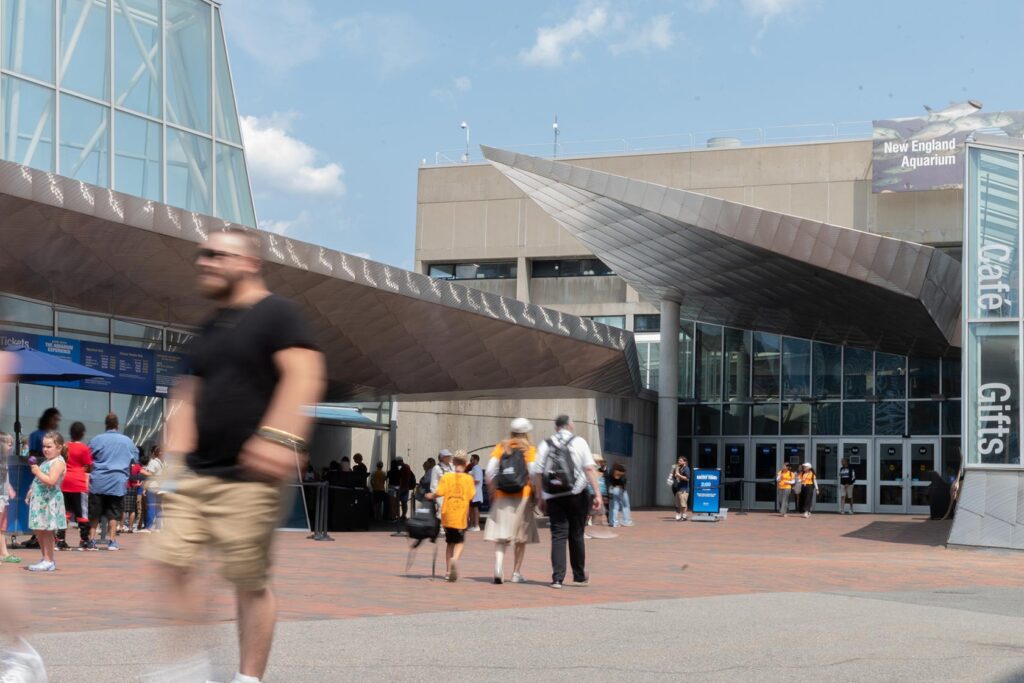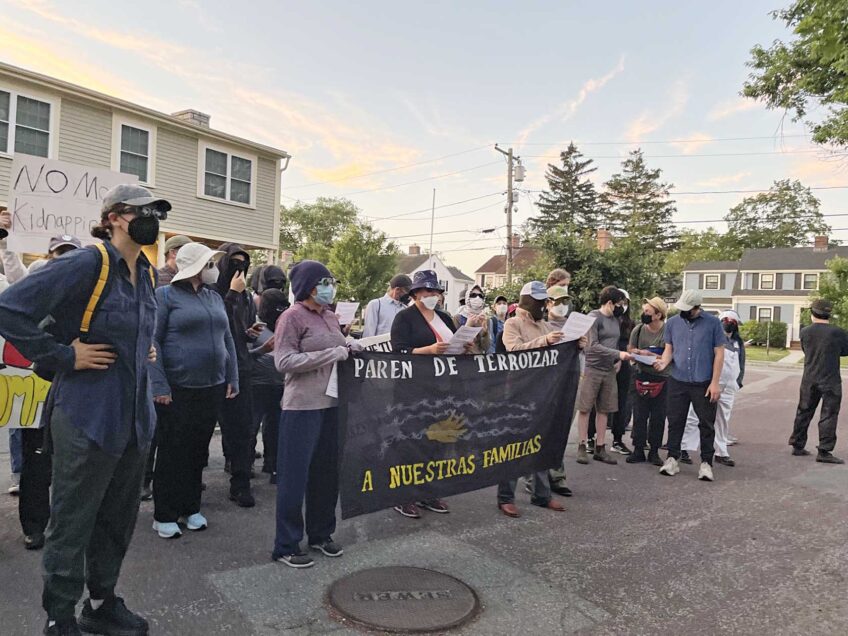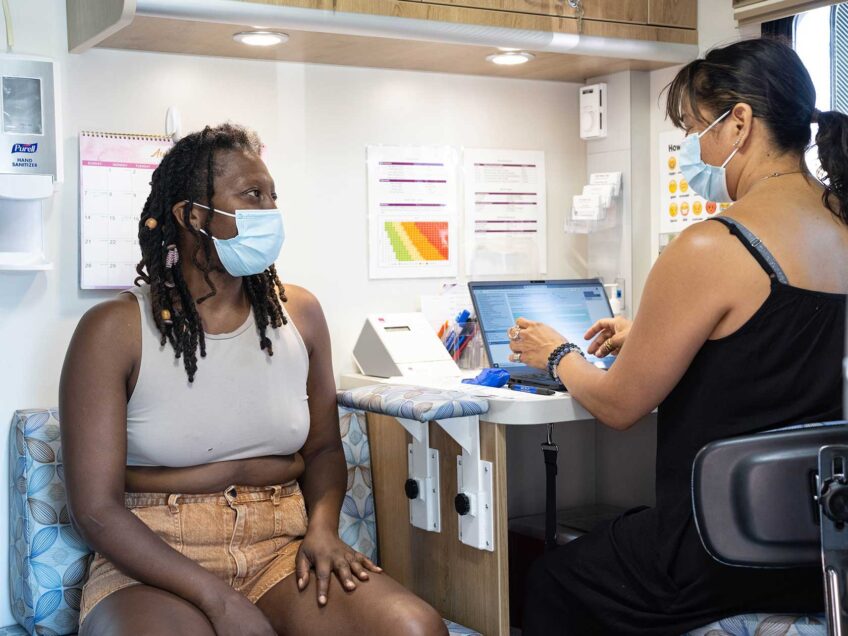
Each summer, throngs of people head to Boston’s downtown waterfront to kayak, sail or relax along the water. But many in Boston’s Black and brown communities often feel cut off from the city’s shores.
Now the New England Aquarium is expanding an initiative it started last year to make the downtown waterfront more accessible and resilient for all Bostonians through its Downtown Waterfront for All program.
It’s all part of a larger effort — from the city of Boston to various nonprofits — to open access to people from traditionally disadvantaged communities who feel the waterfront was not built for them.
“It’s an exciting time, in the sense that it’s now a very intentional and cohesive approach and strategy around it,” said Luz Arregoces, the aquarium’s director of community engagement. “I can only imagine it’s going to flourish.”
The aquarium began targeting Dorchester and East Boston in March, holding listening sessions in the two neighborhoods to identify what people enjoy about the waterfront and what barriers exist to access.
Last year, the aquarium focused on Mattapan, Hyde Park and Chinatown, where residents expressed concerns about their struggles with transportation to the waterfront, cost and the lack of programming that specifically targets them, Arregoces said.
She said residents cited poorly advertised events or opportunities that were not culturally relevant.
In response to the community concerns, the aquarium’s staff began working with other community organizations. They showed a documentary produced by the Mattapan Boys and Girls Club, offered free attractions including a photo exhibit on the exterior of the building and promoted free and discounted ways to access the aquarium.
The initiative began in 2022, Arregoces said, when staff at the aquarium recognized that historically marginalized groups have often been excluded from conversations about development on the waterfront.
“The aquarium wanted to really be a leader in bringing the community together around co-designing and planning what a resilient, accessible and inclusive waterfront can be for Boston,” Arregoces said.
Getting under-resourced residents to the waterfront has been a long goal of the city. In the 1980s, former mayor Raymond Flynn envisioned protections to public access along the waterfront following the Boston Harbor cleanup.
Alice Brown, chief of planning and policy at Boston Harbor Now, which advocates for more waterfront inclusivity and accessibility, said some of the city efforts worked. An example is the Harborwalk, a more than 40-mile public walkway along the waterfront from East Boston to Dorchester that came from Flynn’s proposed framework. But the Harborwalk couldn’t fix everything.
“[The Harborwalk] was created with the mindset of ‘If we build it, they will come,’ and many people came,’’ Brown said. “But it didn’t necessarily undo past issues, whether that’s the construction of highways that cut people off from their waterfronts in Dorchester, whether that’s historical legacy problems of racism or other issues in South Boston or Charlestown Navy Yard.”
The effort for a more inclusive waterfront continues to be important as private development continues along the harbor, especially in areas like the Seaport, said Deanna Moran, vice president of healthy and resilient communities at the Conservation Law Foundation, which works on solutions for the region’s environmental challenges.
“We’ve seen … [the] explosive development over the last 10 years or so on Boston Harbor that has brought an enormous amount of private value to the waterfront,’’ Moran said. “And we’ve not seen that really balanced with public interest and with access and amenities.”
The American City Coalition (TACC), a Roxbury-based organization, began its own effort in 2018, called Waterways, which held listening sessions and programming to connect residents in Roxbury and Dorchester to the city’s waterfronts. That included taking people boating and kayaking along the waterfront so they can experience it firsthand.
Increasing inclusivity along the waterfront is crucial to boosting inclusivity more broadly across the city, said Rev. Willie Bodrick II, TACC’s president and CEO.
“Once you’ve been on the water, it’s really the first step to being able to think critically about the inclusive engagement of shared prosperity in this city,” Bodrick said. “That’s really what we’re talking about.”
He said the organization is weighing “connected economies” and ensuring opportunities for investment in people so that employment and opportunity are shared among Black, brown and other people in the city.
While making the waterfront more welcoming is in line with keeping the coastline resilient in the face of climate change, Brown said that work like increasing elevation along the shoreline to protect against flooding must consider public access and inclusivity.
“The goal … is to ensure that as spaces change and evolve, changing the elevation doesn’t mean building a wall that cuts people off from the waterfront,’’ Brown said. “[It] means creating more gradual projects, so that it improves the quality of public space.”
In Boston, much of the land directly on the water is publicly accessible but privately owned under the Massachusetts Public Waterfront Act. Moran said resilience work should not fall solely on the municipal government, urging more involvement from private property owners.
“It’s incumbent on them to be part of that solution,” Moran said.






